Weird Things That Have Been Left on the Moon
After man’s landing on the Moon, astronauts didn’t just leave their mark, they left a bunch of weird junk.
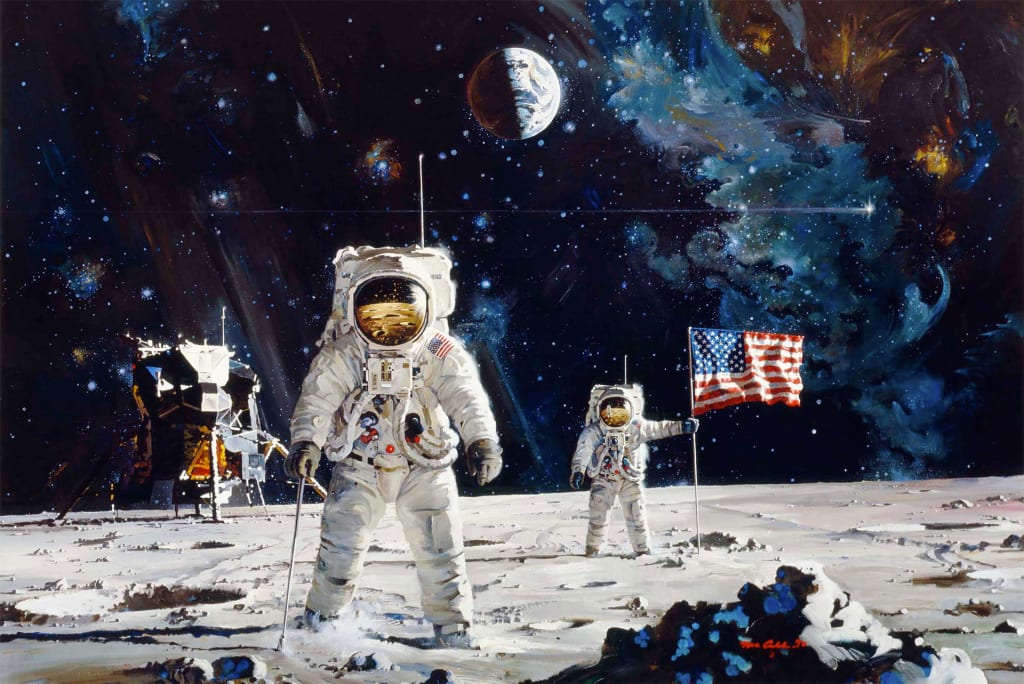
When Neil Armstrong made his 'giant leap for mankind' in that summer of 1969, he changed our existence as a people forever. He marked a moment in time for humanity that will live on and inspire future generations to come. Since the landing of Apollo 11, now well over 40 years ago, there have been a total of five more United States manned missions that did in fact have more humans step foot on the Moon between 1969 and 1972. During those manned missions, they spent a total of 300 plus hours surveying and studying the Moon’s surface and within that time humans have left behind a lot of junk. It should come as no surprise that all 12 of the Apollo astronauts left a few things behind after their six landings on the Moon. Since the lunar module they used to get off the Moon could only lift so much weight off the surface, they swapped out unwanted goods and gear for sample Moon rocks. Scientists estimate there is over 413,000 pounds of material on the Moon. Among those obvious unwanted junk like landers, rovers and of course that famous American flag, were all kinds of weird things. Some items left behind range from simple items like photographs and other nations’ satellites and robotic landers to the more sordid, as in 96 packets of human waste. The following is a list of the lesser known weird things that we left on the Moon.
Poop on the Moon
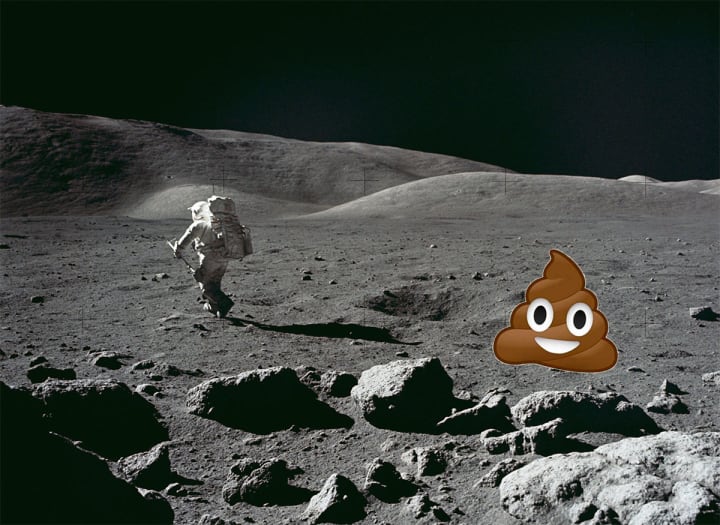
Everyone poops and pees and so did the Apollo astronauts. It’s a fact of life that we all live with. When all 12 Apollo astronauts landed on the Moon, their missions lasted about a day and one would expect at some point, of course, they had to relieve themselves. Armstrong was the first human to step foot on the Moon, but Aldrin holds the title as the first man to urinate on it. It is recorded that all 12 Apollo astronauts left a combined total of 96 bags of human waste. Future space archaeologists are sure to discover these bags that included urine, feces and a little bit of barf. Along with the astronauts' excrements, other trash was left, including backpacks, insulating blankets, utility towels, used wet wipes, personal hygiene kits and empty packages of space food. Most of these items are sure to be some of the grossest and very weird things that have been left on the Moon.
Two Golf Balls
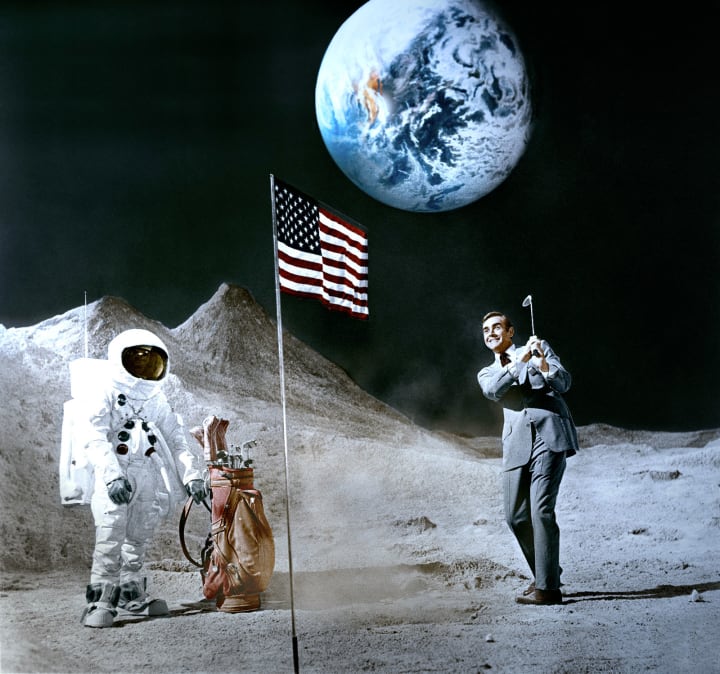
During Apollo 13's 1971 lunar mission, astronaut Alan Shepard was most famous for using a modified Wilson 6 iron head redesigned to take lunar soil samples and playing a round of golf. After taking lunar samples, he placed two golf balls on the Moon’s surface and swung away. There’s a huge chance future space tourists will find one of those balls! Shepard claimed the golf balls traveled "miles and miles and miles," but stories at the time suggested he caught the balls a little fat. (That is golfer lingo for the club hitting the ground before the ball). Shepard’s Moon swing wasn’t a really great depiction of his terrestrial golf game. The low gravity on the Moon made movement by the astronauts awkward and slow. It didn't help that their spacesuits were very stiff, making any sort of movement very challenging.
Lava Rock from Devil's Lake in Oregon
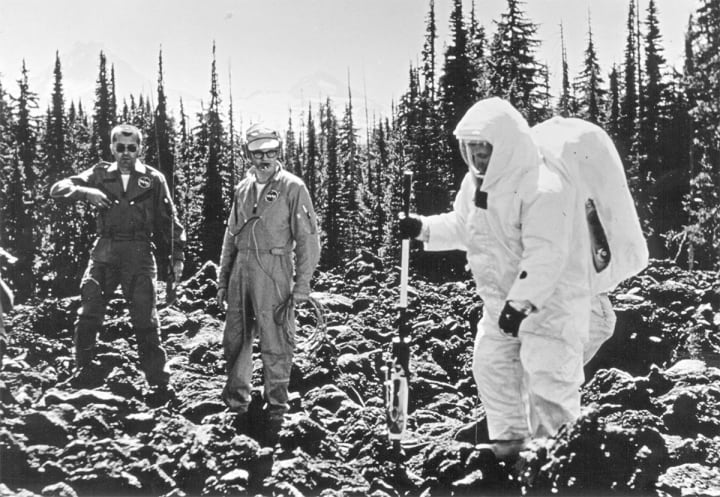
Lava rock on the Moon might be on the most mysterious pieces future Moon explorers will ever find. If these future pioneers did not read up on the Moon and humanity’s interaction they will be a little confused. Prior to the Moon landings, astronauts like Buzz Aldrin, James Lovell and Jim Irwin were sent to a variety of places around the world like Iceland, Hawaii, Meteor Crater in Arizona and Central Oregon. The future astronauts were sent to these places, known for unique volcanic features, to gain scientific knowledge and practice operational familiarity for the Moon landings. During the time in Central Oregon, specifically the town of Bend, they noticed the landscape had immense similarity to the Moon that the astronaut scholars quickly started referring to it as ‘Moon Country’. Future Apollo astronaut Jim Irwin took a chunk of lava rock that he’d picked up near Devil’s Lake in Bend and brought it to the Moon where it lays on the lunar surface today.
Andy Warhol Art Gallery on the Moon

Some of humanity's greatest achievements in space are some of the least known. Take the legendary pop artist Andy Warhol and his secret art gallery on the Moon. It's seriously a real thing, thanks to astronaut who smuggled it aboard Apollo 12. Along with Warhol’s drawing, other artists of the time including Claes Oldenburg, David Novros, Forrest Myers, Robert Rauschenberg and John Chamberlain contributed other drawings. The art was displayed on a tiny penny-sized ceramic chip which included the famous doodle Warhol drew of a penis. The drawing, at the time, was said to be a space ship or his signature, but let’s get real, considering who it came from, it looks more like a penis! It’s art imitating life right on the Moon.
Family Photo and the Camera That Took It
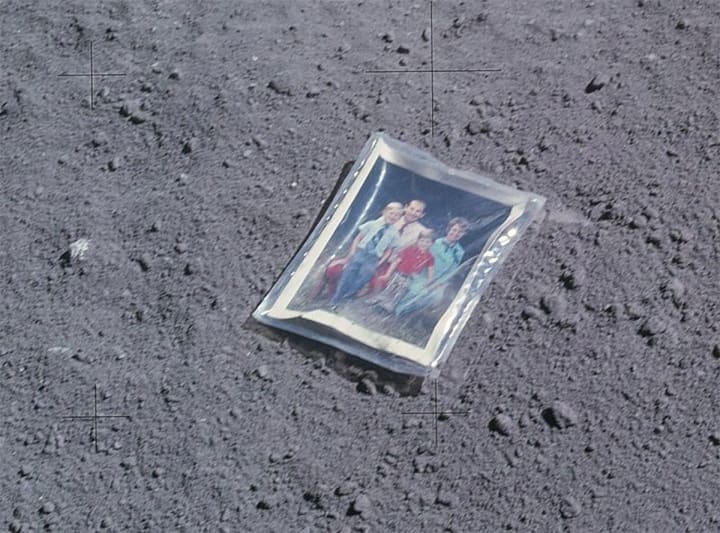
In 1972, Apollo 16 astronaut Charles Duke didn't just leave footprints when he visited the Moon’s Descartes Highlands, he left a photograph of him, his wife and their two sons. The reverse of the photograph was signed by Duke's family and reads the message: "This is the family of Astronaut Duke from Planet Earth. Landed on the Moon, April 1972." Duke photographed the family picture with a Hasselblad camera which is resting on the dusty surface next to one of his boot prints and near the photograph.
Fallen Astronaut Sculpture

The crew of Apollo 15 in 1971 placed a small aluminum sculpture made by artist Paul Van Hoeydonck on the Moon to memorialize those astronauts who had died prior to the several Moon landings. The sculpture named "Fallen Astronaut" was a small 3" aluminum stylized figure, meant to depict an astronaut in a spacesuit. The intention was to commemorate the astronauts and cosmonauts who have died in the advancement of space exploration. Along with the sculpture, there is a plaque bearing the names of eight American astronauts and six Soviet cosmonauts who had died in service.
University of Michigan Official Moon Outpost
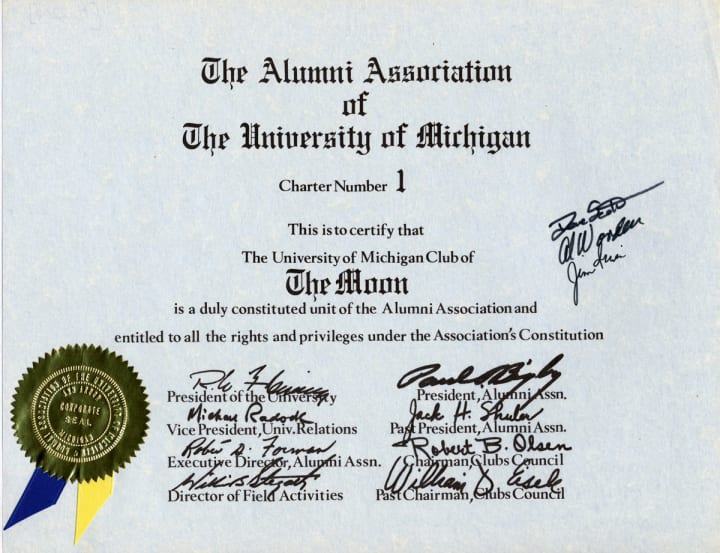
The three astronauts on the Apollo 15 crew, James Irwin, David Scott and Alfred Worden, all had ties to the University of Michigan. In solidarity with pride in their alma mater, the astronauts left a document on the Moon which established the first lunar branch of the University's alumni association. The document read: "The Alumni Association of The University of Michigan. Charter Number One. This is to certify that The University of Michigan Club of The Moon is a duly constituted unit of the Alumni Association and entitled to all the rights and privileges under the Association's Constitution." Irwin, Scott and Worden all received honorary doctorates of science from the University in 1971 after completing the Moon mission. Establishing a college’s lunar outpost is sure to be one of the strangest and weird things that have been left on the Moon.
Falcon Feather and Hammer

Along with the other various objects left on the moon there was an even more delicate item: a falcon feather, dropped during the 1971 Apollo 15 mission. Mission commander Dave Scott brought the feather, from Baggin, the Air Force Academy's mascot falcon, to the Moon in order to conduct an experiment in the most intense vacuum as possible to show how the laws of gravity are on the Moon. It was the classic Galileo’s Leaning Tower of Pisa experiment we’ve all done in fourth grade science class: When dropped from the same height, what will hit the ground faster, a bowling ball or a feather? In Scott’s case it was a hammer and falcon feather. On Earth, the bowling ball of course hits first due to our gravity and wind resistance. But on the Moon however, that gravitational law does not apply. Both objects fell at the same speed and hit the ground at the same time because there is an infinitesimal amount of air in the Moon's atmosphere thus air resistance is not an issue. Also the gravity on the Moon is ¼ or 17 percent that of Earth’s. Today, both hammer and falcon feather lay exactly where they fell at the same time.
12 Pairs of Moon Boots
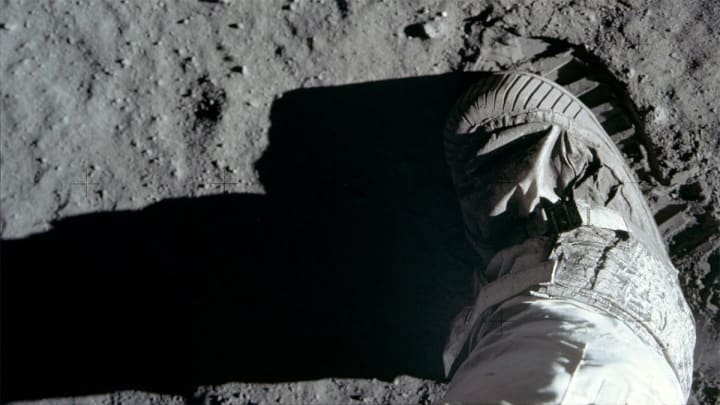
It makes perfect sense when trying to blast off the Moon with all those samples of Moon rocks the Apollo 11 crew needed to adjust the weight of the lunar module. In an effort to lighten the load of the spacecraft, Neil Armstrong and Buzz Aldrin left behind anything they felt they didn't need for the return trip, including 12 pairs of space boots. These today are lying up on the lunar surface, waiting for future fashionistas to find.
Richard Nixon's Signature
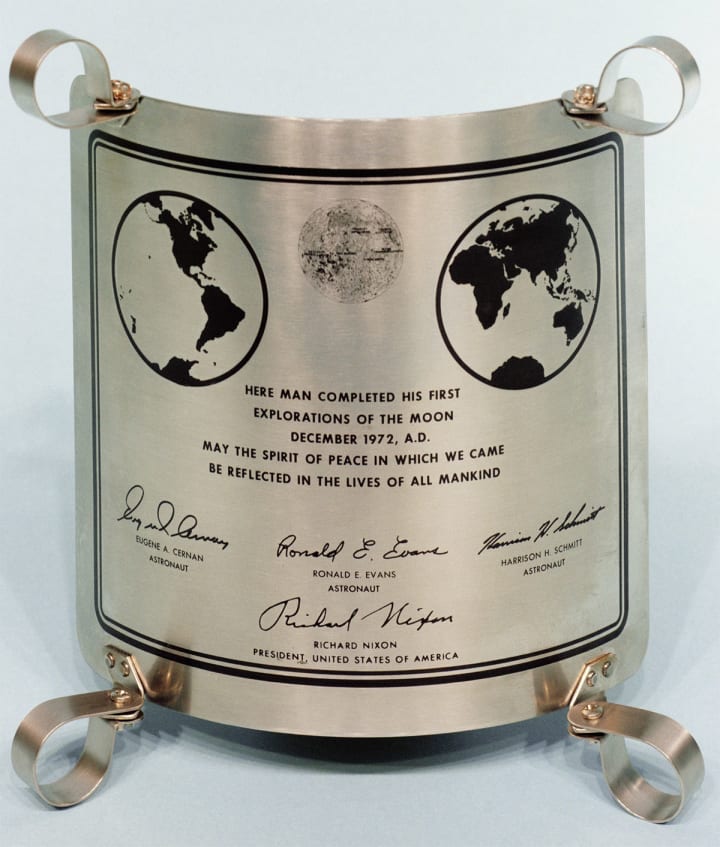
The first mission, Apollo 11, and last, Apollo 17, ladders of descent stages lunar modules hold stainless steel plaques bearing the signature of Richard Nixon, the 37th President of the United States. In addition to Nixon, the plaques bear the signatures of all the participating astronauts who stepped foot upon the moon.
Gold Olive Branch

One of the first things the astronauts of Apollo 11 did was to place a golden replica of an olive branch on the lunar surface. The golden olive branch was left by Neil Armstrong. The gesture represented a wish for peace for all mankind.
The Weirdest International Greeting Card Ever
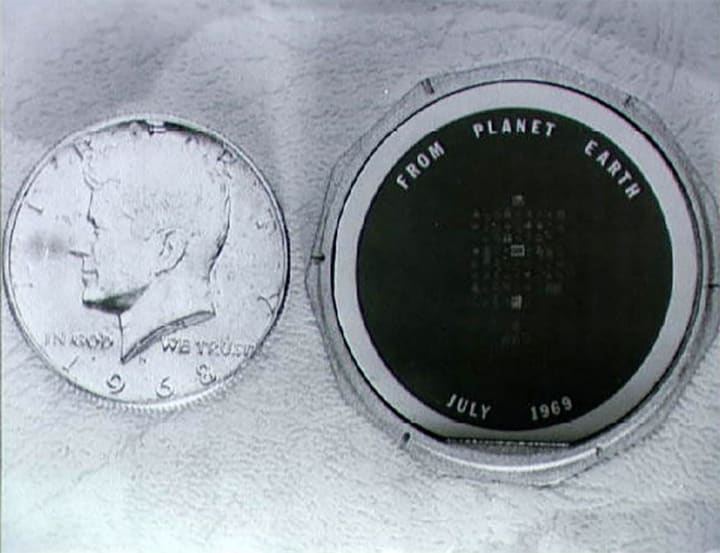
During the Apollo 11 mission of 1969 a small silicon disk was left in the Sea of Tranquility bearing goodwill messages from from United States Presidents Eisenhower, Kennedy, Johnson and Nixon and the leaders of 73 nations including a message from Her Majesty The Queen Elizabeth. The goodwill disc was about the size of a US half dollar coin made out of silicon. The disc also carried names of the leadership of the Congress, the four committees of the House and Senate responsible for legislation related to the National Aeronautics and Space Administration (NASA), and NASA's top management, including past administrators and deputy administrators. At the top of the disc is the inscription: "Goodwill messages from around the world brought to the Moon by the astronauts of Apollo 11." Around the rim of the disc is the inscription: "From Planet Earth -- July 1969."
About the Creator
George Gott
Writer & Social Media Editor for Jerrickmedia who is an avid reader of sci-fi and a fierce defender of women, minority, and LGBTQ rights.






Comments
There are no comments for this story
Be the first to respond and start the conversation.